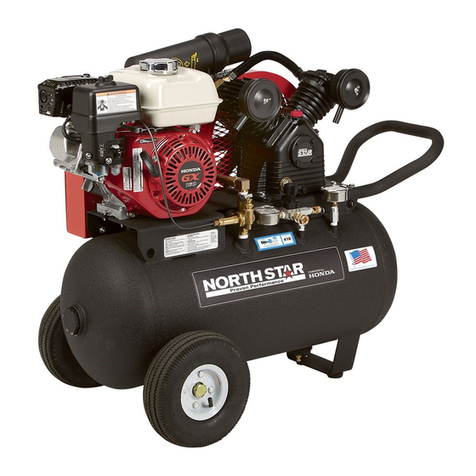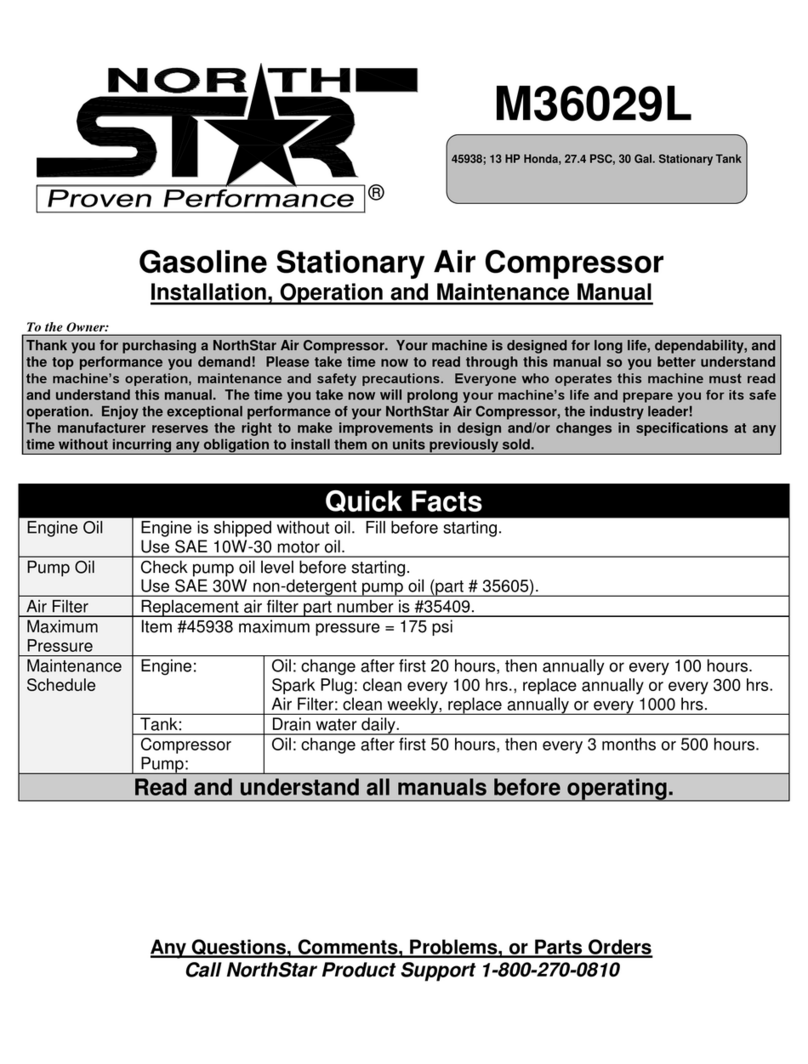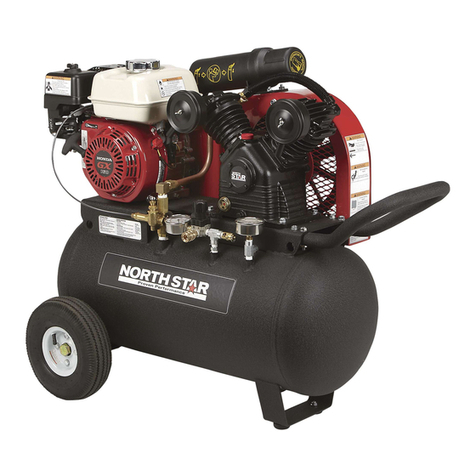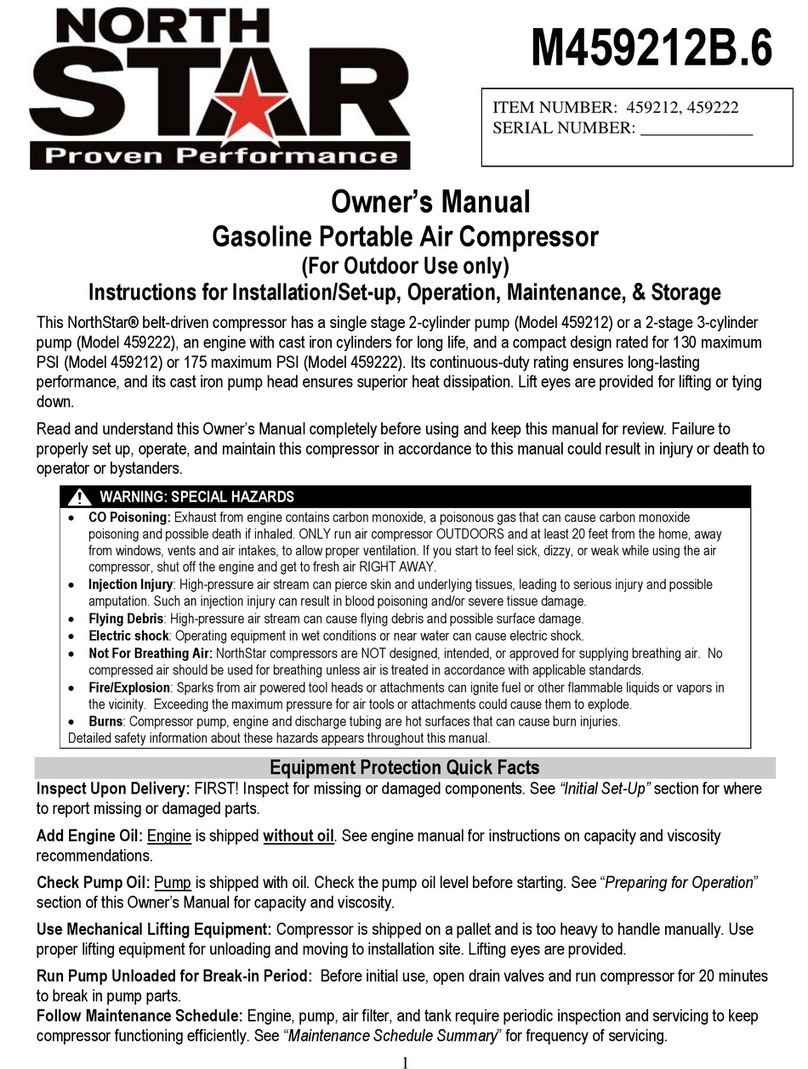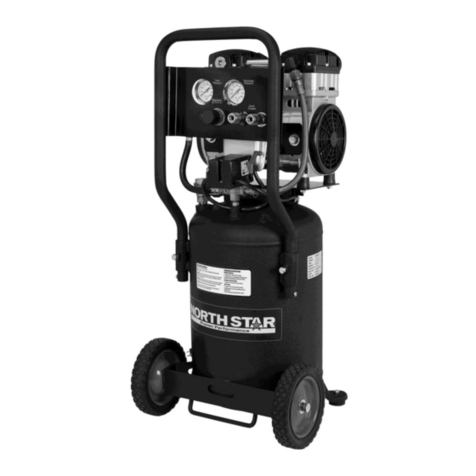
Table of Contents
Equipment Protection Quick Facts ........................................................................................................................................ 1
Table of Contents ........................................................................................................................................................2
About Your Air Compressor Pump ............................................................................................................................4
Specifications ..............................................................................................................................................................5
Engine / Motor Pulley Sizing Calculations............................................................................................................................. 5
Component Identification ...........................................................................................................................................6
Mounting Dimensions .................................................................................................................................................7
Safety Signal Words....................................................................................................................................................8
Hazard Signal Word Definitions ............................................................................................................................................ 8
Initial Set-Up ................................................................................................................................................................9
Step 1. Inspect & Unpack........................................................................................................................................................ 9
Step 2. Assembly..................................................................................................................................................................... 9
Attach Regulator (Recommended)........................................................................................................................................ 9
Step 3. Select Suitable Location............................................................................................................................................. 9
Operation ...................................................................................................................................................................10
Follow Operation Safety Rules............................................................................................................................................. 10
Prepare for Operation............................................................................................................................................................ 10
Check/Add Oil to the Pump................................................................................................................................................. 10
Proper Air Hose and Tool Use.............................................................................................................................................. 11
Pressure Control Related Devices...................................................................................................................................... 11
Compressor - Tool Requirements ....................................................................................................................................... 11
Using Compressor Pump for Spraying................................................................................................................................ 11
Flammable Materials........................................................................................................................................................... 11
Moisture in Compressed Air................................................................................................................................................ 11
For Malfunction During Operation....................................................................................................................................... 12
Maintenance & Repair...............................................................................................................................................13
Maintenance Schedule Summary.............................................................................................................................13
Detailed Instructions –Maintenance & Repair........................................................................................................13
Inspect Safety/Relief Valve ................................................................................................................................................. 13
Inspect Air Filter .................................................................................................................................................................. 13
Keep Compressor Clean..................................................................................................................................................... 13
Inspect Compressor for Air Leaks....................................................................................................................................... 14
Change Pump Oil................................................................................................................................................................ 14
Check Drive Belt for Tension and Alignment....................................................................................................................... 14
Keep Compressor Clean..................................................................................................................................................... 14
Troubleshooting ........................................................................................................................................................15
4592900 Pump Explosion .........................................................................................................................................16
4592900 Pump Parts List ..........................................................................................................................................17
4592900 Pump Kits....................................................................................................................................................17
4593000 Pump Explosion .........................................................................................................................................18
4593000 Pump Parts List ..........................................................................................................................................19
4593000 Pump Kits....................................................................................................................................................20




